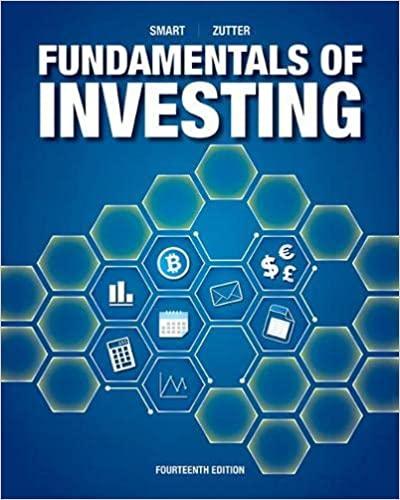Answered step by step
Verified Expert Solution
Question
1 Approved Answer
problem 1 help Th 09: Blueprint Problems - Stocks and Their Valuation + (1+WACC) (+WACC) of company + ... + + (14WACC) non-Operating assets Free

problem 1 help
Th 09: Blueprint Problems - Stocks and Their Valuation + (1+WACC) (+WACC) of company + ... + + (14WACC) non-Operating assets Free cash flows are generally forecasted for 5 to 10 years, after which it is assumed that the final forecasted free cash flow will grow at some long-run constant rate. Once the firm reaches its horizon date, when cash flows begin to grow at a constant rate, the equation to calculate the continuing value of the firm's operations at that date is: Horizon value = V Company's operations at t=N=FCFx+1/(WACC-SFCF) Discount the free cash flows back at the firm's welghted average cost of capital to arrive at the value of the firm today. Once the value of the firm's operations are calculated and the value of non-operating assets are added, then the market value of debt and preferred are subtracted to arrive at the market value of equity. The market value of equity is divided by number of common shares outstanding to estimate the firm's intrinsic per-share value. We present 2 examples of the corporate valuation model. In the first problem, we assume that the firm is a mature company so its free cash flows grow at a constant rate. In the second problem, we assume that the firm has a period of nonconstant growth Quantitative Problem 1: Assume today is December 31, 2019. Barrington Industries expects that its 2020 after-tax operating income (EBIT(1 - T) will be $420 million and its 2020 depreciation expense will be $60 million. Barrington's 2020 gross capital expenditures are expected to be 5120 million and the change in its net operating working capital for 2020 will be $30 million. The firm's free cash flow is expected to grow at a constant rate of 5% annually. Assume that its free cash flow occurs at the end of each year. The firm's weighted average cost of capital is 8.9%; the market value of the company's debt is $2.35 billion; and the company has 180 million shares of common stock outstanding. The firm has no preferred stock on its balance sheet and has no plans to use it for future capital budgeting projects. Also, the firm has zero non-operating assets. Using the corporate valuation model, what should be the company's stock price today (December 31, 2019)? Do not found intermediate calculations. Round your answer to the nearest cent. 9:29 $ per share 120/Step by Step Solution
There are 3 Steps involved in it
Step: 1

Get Instant Access to Expert-Tailored Solutions
See step-by-step solutions with expert insights and AI powered tools for academic success
Step: 2

Step: 3

Ace Your Homework with AI
Get the answers you need in no time with our AI-driven, step-by-step assistance
Get Started


